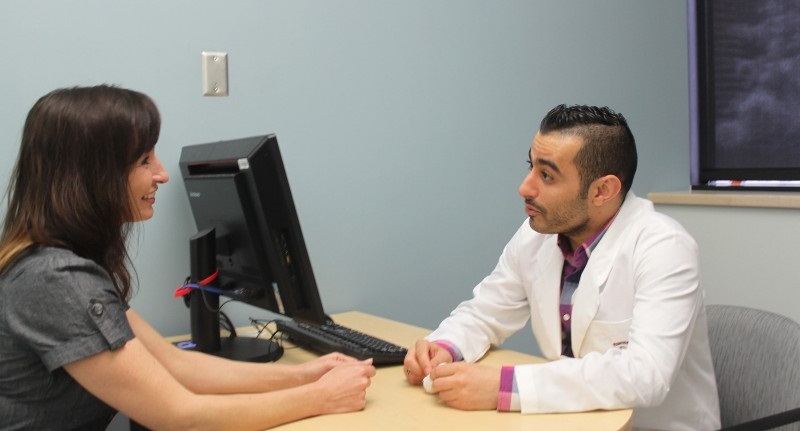Since its founding in 1917, the University of Alberta Faculty of Pharmacy and Pharmaceutical Sciences in Edmonton, AB, has been an innovator. The four years of study needed to earn the school’s Bachelor of Science degree in Pharmacy is comprised of traditional classroom coursework and practice laboratories involving various scenarios simulations the student will encounter when going into practice. This program, the only one of its kind in Alberta, provides pharmacists for both retail and hospital pharmacies.
Objective Structured Clinical Examination
The instructional techniques for real-world clinical scenarios are used by medical and pharmaceutical schools to gear students toward taking the Objective Structured Clinical Examination (OSCE) exam at the completion of their degree. The exam consists of multiple standard stations at which students must complete one to two specific clinical tasks, often in an interactive environment involving patient actors (i.e., standardized patients).
The U of A has been utilizing scenarios geared towards the OSCE for some time and using some form of video to record the sessions. According to Frank Hanta, Assistant Dean with the U of A pharmacy school, “Generating video of students allows them to reflect on their performance. There is a lot of data that supports reflection in the process of consolidated learning.” The school designs the sessions to cover a variety of scenarios per the OSCE criteria. These include patient education and counseling, clinical problem solving, developing medical management plans, diagnosing, and consulting. The school also brings in actors to pose as patients who are emotional or dealing with other issues.
Outpacing Existing Technology
Previously, the U of A pharmacy students brought small video cams into the session. The university supplied students with an SD card to record the sessions, which enabled faculty members to review the sessions. Based on student performance during these sessions the faculty, many of whom are practicing pharmacists, suggest improvements and grade student performance. However, with 130 students in the school the amount of video generated on the SD cards was creating a tremendous workload.
Dean James Kehrer of the pharmacy school decided that this was the time to launch a search for an updated Video Observation and Recording System. Several faculty members collaborated with the IT department on what was needed to record and store session video, and an Internet search brought them to the Valt Solution from IVS. According to Hanta, “We found that the Valt system was much better at meeting our needs compared with other approaches. The other systems didn’t have the versatility of the of the IVS system to provide what we wanted to do. You couldn’t make any adjustments at all. They were cumbersome to work with and you would spend hours programing it.”
Successful Implementation
The area in the lower level of the Medical Sciences building was undergoing renovation to accommodate the new practice laboratory. IVS was able to fully implement new HD IP cameras, microphones and secure Valt Server the in under 30 days to be ready by the time the first students arrived. Administrator of the practice lab Gillian Johnson is responsible for the day-to-day activities of the clinic. The practice laboratory has 16 scenario rooms, or pods, with each session involving 32 students in each of the 16 pods. When the students are in place for these sessions Gilliam, over the intercom, gives the command to start the session. Students are required to log in on the IVS Valt system to begin recording the session. The sessions are ten minutes; once sessions are complete, students move to a different pod and a new session begins. The IVS Valt system provides a drop-down menu to tag each session with data such as participants’ names, session type, session location, and other information for rapid future reference. Students can stream the video from the session archive to review their performance with supervisors.
In Johnson’s office a monitor displaying the intuitive Valt browser interface enables her to supervise all 16 pods. Faculty supervisors are also watching students from their offices and as the session proceeds can create annotations to reference discussion points. Supervisors can access and watch the streaming video for review at home and retrieve markers doing a content database search.
The IVS system provides U of A students real-world training based on easily accessible real-time data. The video presents students with a clear idea of how they are progressing through the coursework and enables them to perfect their “bedside manner” when dealing with patients/customers. The job of a pharmacist is more than dispensing medication, as they can play a role in improving patient health.
After one year of the program, Dr. Teri Charrois, Clinical Associate Professor and supervisor of the program, credits the IVS system with improving the effectiveness of the labs. As for the students, their evaluations on a six-point scale jumped up two points over the previous year. Charrois points out that even though the video session is a part of the overall coursework, “We can say with confidence that the IVS Valt system did contribute to this, plus it has allowed us to do a lot more with the students. The system affords our students additional learning opportunities and the chance to become competent professionals in the area of pharmacy.”







